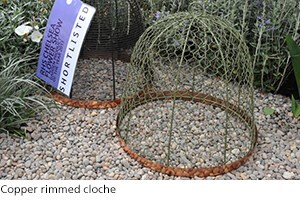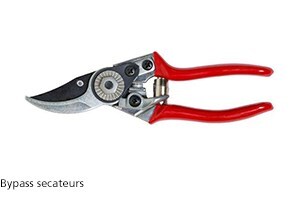Jobs of the month (March)
We are now an a transition between winter and spring. In a bad year, it can be bitterly cold or endlessly soggy. But in a good one, longer days of strengthening sunlight can warm the cockles of every gardener’s heart. In my experience, March is a bit of a curate’s egg, with good days and bad days. So, be ready to take advantage of the mild, sunny spells and don’t be afraid of retreating indoors if the prevailing conditions dictate. When soil and weather allow, outdoor sowings of hardy vegetables and flowers become a priority that’s only trumped by the last of the winter pruning. Good weather also spells trouble, in the form of fresh crops of weed seedlings that can put in an appearance almost anywhere, while troublesome pests, such as slugs and snails, are on the march and the munch…and the lawn may need its first cut this month.
Tools for the job
Early outdoor sowings Choose a sunny, sheltered spot in the garden and prepare the ground thoroughly for early sowings, as soon as soil and weather conditions allow. Cover the prepared seedbed with clear polythene or cloches as this will help to warm the soil and protect it from heavy rain. It is now time to start sowing hardy vegetables, such as early carrots, radish, early peas, turnips and spring onions. Check the soil temperature is high enough, using a soil thermometer, before making your first sowings (see seed packet for details). Replace the cloches or cover crops with garden fleece after sowing, to encourage rapid germination. For more information about sowing see ‘Success with seeds’.
 Indoor benefits
Indoor benefits One way to beat persistent bad weather is to sow hardy vegetables in pots under cover in a greenhouse, conservatory or coldframe. Sowing in pots also means you don’t waste seed and there is no need to create a perfect seedbed – a big advantage if your soil is heavy or very stony. If given the correct conditions, the resulting seedlings will also grow more quickly and usually get a head start on crops sown directly outside.
Protect against slugs
Take measures to protect vulnerable plants, such as delphiniums, hostas, lupins and pyrethrums, from the attention of slugs by putting up barriers, setting traps or using deterrents. To be effective, traps should be checked and emptied regularly.
Getting ahead…
Get your lawn into shape On a pleasant dry day, once the dew has evaporated from the grass, it’s an ideal time to get out and inspect your lawn and make repairs (see ‘How to renovate your lawn’). [Link to October feature] In mild areas, once the grass reaches over 5cm long, you will need to make the first cut of the season, with the mower blades set high. After a couple of cuts, lower the blades to about 2-3cm.Not too late to…
Force strawberries You can encourage new strawberry plants to fruit early, by bringing them into the greenhouse or conservatory at the beginning of March. With luck, by the end of the month they will be starting to flower and need hand pollinating - using a cotton-bud or soft artists’ brush. Alternatively, cover one or two rows outside with cloches in order to get a harvest a couple of weeks earlier than uncovered rows.
You can encourage new strawberry plants to fruit early, by bringing them into the greenhouse or conservatory at the beginning of March. With luck, by the end of the month they will be starting to flower and need hand pollinating - using a cotton-bud or soft artists’ brush. Alternatively, cover one or two rows outside with cloches in order to get a harvest a couple of weeks earlier than uncovered rows. Plant a new hedge Bare-root deciduous hedges can still be planted this month, provided the soil is not waterlogged or frozen. Container-grown specimens can be planted at any time, although late spring is the best time for planting evergreens. To achieve a thick hedge quickly, plant two staggered lines of plants and protect with a windbreak in exposed spots until well established.
Divide and plant snowdrops March is your last chance to divide, move or plant snowdrops after flowering while they are still in leaf (known as ‘in the green’). This is the best way to plant them because they establish more quickly than dry bulbs planted during the autumn. Congested clumps can be lifted and divided before replanting immediately in well-prepared ground.
Prune roses
 The perfect time to prune bush roses is just after the worst of the winter weather, but just before new growth breaks. This can mean pruning during February in mild years or this month in colder ones. If you haven’t got around to pruning your roses and they have started to shoot, do it now – taking great care not to damage the new growth. The aim is to keep the plant vigorous, healthy and flowering well. Cut back each stem to about knee high, just above an outward-facing bud, using an angled cut.
The perfect time to prune bush roses is just after the worst of the winter weather, but just before new growth breaks. This can mean pruning during February in mild years or this month in colder ones. If you haven’t got around to pruning your roses and they have started to shoot, do it now – taking great care not to damage the new growth. The aim is to keep the plant vigorous, healthy and flowering well. Cut back each stem to about knee high, just above an outward-facing bud, using an angled cut.
